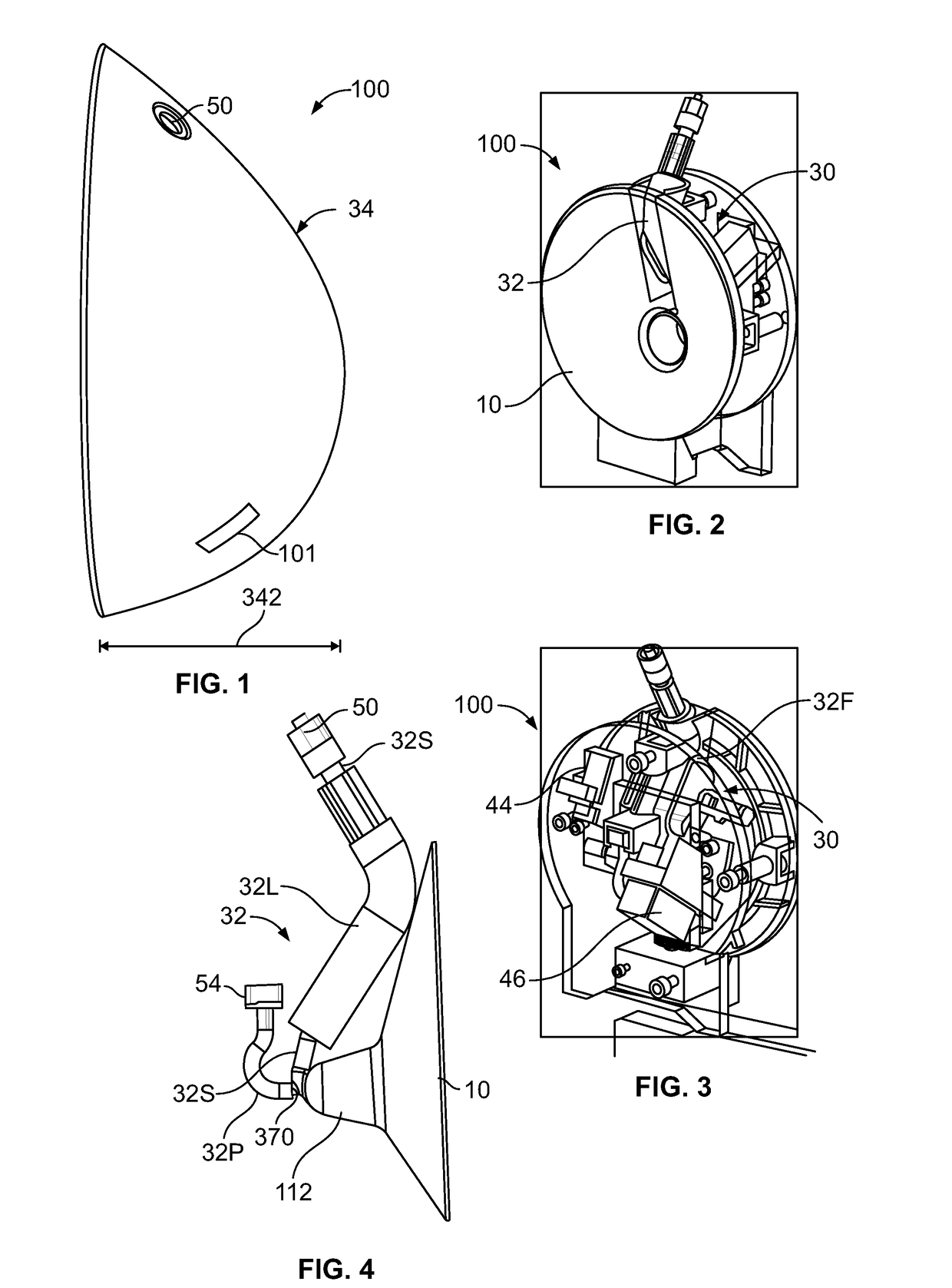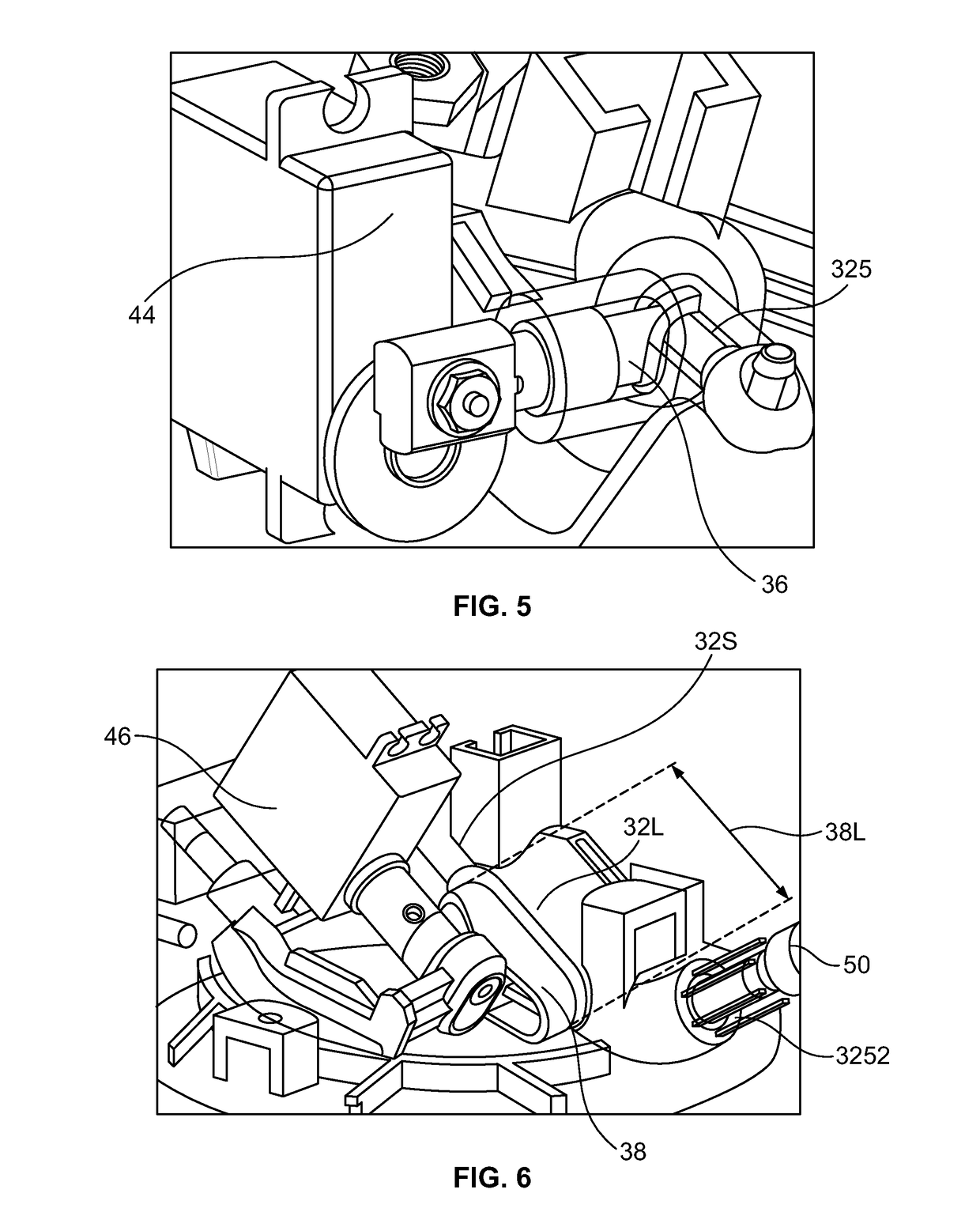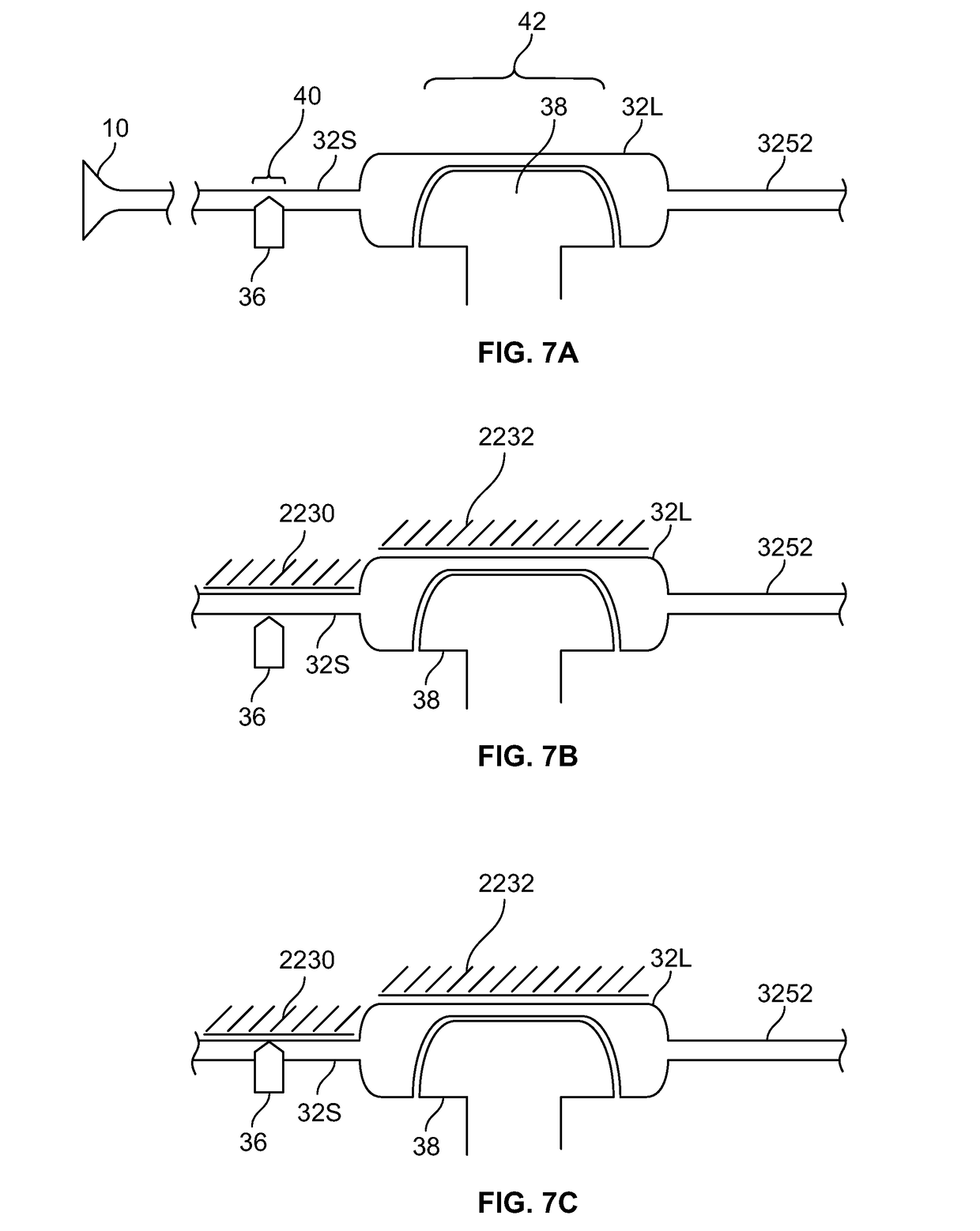Breast pump system and methods
- Summary
- Abstract
- Description
- Claims
- Application Information
AI Technical Summary
Benefits of technology
Problems solved by technology
Method used
Image
Examples
example 1
[0316]Testing was done on a light body vinylpolysiloxane breast flange (Danville Star VPS #80011-01 (manufactured by Danville Materials in Ramon, Calif.), to determine the relationship between force applied to the nipple receiving portion 494 and pressure (vacuum) within the nipple receiving portion 494. The nipple receiving portion 494 was immobilized by a support496 and a predetermined force was applied by a load cell 490 (see FIG. 49 to the nipple receiving portion 494 opposite the supported side of the nipple receiving portion 494. A stopper 498 was used to allow establishment of a vacuum within the nipple receiving portion 494 and a tube 502 was used to connect syringe 504 and pressure gauge 506 in fluid communication with the interior space of the nipple receiving portion 494. Various runs were made with different preload forces applied to the nipple receiving portion 494 by load cell 490, ranging from 1.5 N to 4 N, which corresponded to preload displacements (at atmospheric p...
example 2
[0318]The arrangement of Example 1 was modified to test the dynamic force-pressure relationship of the system. An oscilloscope 508 (see FIG. 51) was electrically connected to receive output pressure reading and force readings from pressure gauge 506 and load cell / sensor 490 respectively. Like Example 1, preload displacements at atmospheric pressure were varied for different runs of the test, ranging from −11.60 mm to −1.41 mm. For each run, the vacuum was cycled between high vacuum to low vacuum three times. For each run, the force exerted by the nipple receiving portion on the sensor of load cell 490 was observed to decrease as the vacuum increased, according to a substantially linear force-pressure relationship. FIG. 52 shows a plot of vacuum 512 and force 514 plotted as voltage received by the oscilloscope 508 versus time, for the run with the preload displacement of −11.60 mm. It can be observed that the force 514 decreases linearly proportionally to the increase in vacuum 512 a...
example 3
[0319]The arrangement of Example 1 was modified to test the relationship between the position of a target location of the nipple receiving portion 494 and vacuum level within the nipple receiving portion 494, see FIG. 54. In this Example, the load cell 490 of Example 1 was replaced by a marker block 516 preloaded against the nipple receiving portion 494 with a spring 518 at atmospheric pressure. Upon pulling a vacuum in the system by withdrawing the plunger of the syringe 504, the marker block 516 moves with the wall of the nipple receiving portion 494 as it flexed inwardly due to the reduction in pressure.
PUM
 Login to View More
Login to View More Abstract
Description
Claims
Application Information
 Login to View More
Login to View More - R&D
- Intellectual Property
- Life Sciences
- Materials
- Tech Scout
- Unparalleled Data Quality
- Higher Quality Content
- 60% Fewer Hallucinations
Browse by: Latest US Patents, China's latest patents, Technical Efficacy Thesaurus, Application Domain, Technology Topic, Popular Technical Reports.
© 2025 PatSnap. All rights reserved.Legal|Privacy policy|Modern Slavery Act Transparency Statement|Sitemap|About US| Contact US: help@patsnap.com



